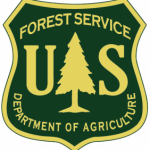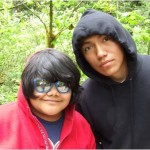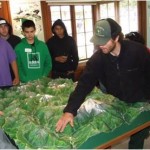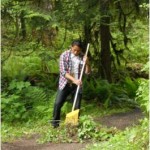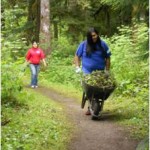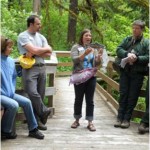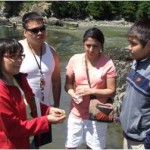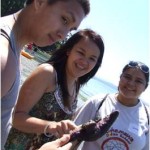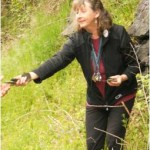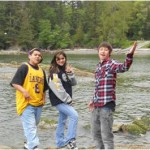September 29th, 2011
North Cascades National Park – National Public Lands Day
After long summer reprive— the Saturday Science Academy is back in full swing. This was the first of seven Saturday Science Academy (SSA) events to be hosted by the Science Program of Northwest Indian College (NWIC) for the Fall Quarter 2011. The day began early, but promised warm fair weather and the beautiful escape to an autumn-colored landscape. Students arrived and checked early around 8am and then gathered to travel 1 ½ hrs to the North Cascades Institute (NCI). Because of travel restrictions we forfeited starting games before leaving on our journey. Along the way, we met up with youth from the Sauk-Suiattle Tribe at Rockport, WA who would be joining the other youth in the day’s activities. Eventually, we arrived at our first destination at the Newhalem North Cascades National Park Visitor’s Center. There students met Mike Brondi and his assistant named Echo, as well as guest interns from the Student Conservation Association (SCA) who welcomed and introduced the youth to the National Park. Students gravitated to the mountainscape model of the park where buttons and lights named each major peak, valley and river system. Mike and his crew also led students through the hands-on learning center for a quick park video and brief introduction to the biological diversity of the North Cascade Mts.
We left from the visitor’s center around 11am to travel east to Diablo Lake. As we arrived at Diablo Lake we followed a road path across the great expanse of the Diablo Lake Dam nearly 400 ft above the valley floor. At the end of the path we arrived at the North Cascades Institute to join the National Public Lands Day Celebration. Students began with a short hike into the woods to examine a recent rock and debris flow that changed the growing forest dynamics around the trail. Students learned how to tell the age of a young evergreen tree by its annual whorl of branches as well as how to identify various native trees, shrubs and herbs of the forest ecosystem. After the hike students gathered at the lake for a BBQ lunch and rest from the morning hike and discussions.
After lunch students gathered around the lake beach for discussions with Mike Brondi and the SCA interns about public lands: who the land belongs to, how it is managed and what they can do as teens to help care/ encourage Park health and sustainability. These discussions were followed by introductions to high school students engaged in the NC Wild program led by NCI during the summer. The NC Wild program encourages outdoor environmental learning and recreation as well as public lands service and youth leadership. Eight students from high schools in Skagit, Whatcom, Snohomish and King Counties shared their personal stories of two weeks working, learning and relationship building in the wilderness. Each shared how the program changed their outlook on the need for and care of public lands. Afterward, the SSA students learned about the work NC Wild and National Park Staff completed in re-building degraded trail and removing invasive plant species. The day ended with students walking across the dam and looking in awe out over the sunny valley before heading out on the long journey home.

